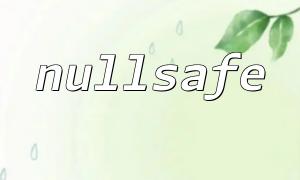User login and logout are crucial features in any website development. To protect user data, appropriate technical measures must be taken to prevent potential malicious attacks and unauthorized access. This article will focus on how to use PHP functions to implement secure user login and logout controls, ensuring the reliability and security of the authentication process.
Secure control for user login involves both client-side and server-side validation. Client-side validation is done before submitting the login form to check for basic input errors such as empty fields or incorrect formats, which reduces the server's load and improves user experience. Server-side validation checks the accuracy and security of the user data once it has been submitted.
Here is a simplified example of implementing user login functionality:
<?php
session_start();
function login($username, $password) {
// Validate the username and password in the database (implementation omitted)
// If validated, store relevant user information in session
$_SESSION['user'] = array('username' => $username);
}
function isLoggedIn() {
// Check if user information exists in the session
return isset($_SESSION['user']);
}
function logout() {
// Clear user information from session
session_unset();
session_destroy();
}
// Handle login request
if ($_SERVER['REQUEST_METHOD'] === 'POST' && isset($_POST['login'])) {
$username = $_POST['username'];
$password = $_POST['password'];
// Perform server-side validation
if ($username === 'admin' && $password === '123456') {
login($username, $password);
// Redirect to user profile page after successful login
header('Location: /user/profile.php');
exit;
} else {
// Display error message on login failure
echo 'Login failed. Please check your username and password.';
}
}
?>
In the code above, we use `session_start()` to start a session, the `login()` function for logging in, `isLoggedIn()` to check if the user is logged in, and `logout()` to log the user out. The login form data is received via POST, and server-side validation is performed. If validation is successful, the user information is stored in the session.
User logout functionality typically appears on the user homepage or in account settings. When the user clicks logout, we need to ensure that the process is secure. To prevent Cross-Site Request Forgery (CSRF) attacks, we can use CSRF tokens for protection.
Here is an example of the user logout code:
<?php
// Handle logout request
if ($_SERVER['REQUEST_METHOD'] === 'POST' && isset($_POST['logout'])) {
session_start();
// Verify CSRF token (implementation omitted)
logout();
// Redirect to login page after successful logout
header('Location: /user/login.php');
exit;
}
?>
In this code, we use the `logout()` function to clear the session information. We also include CSRF token validation during the logout process, preventing malicious forged requests.
By using PHP functions to implement secure user login and logout controls, we can effectively prevent malicious attacks and unauthorized access, ensuring the privacy and security of user data. Additionally, combining other security measures such as encrypted storage and firewalls can further enhance website security.









